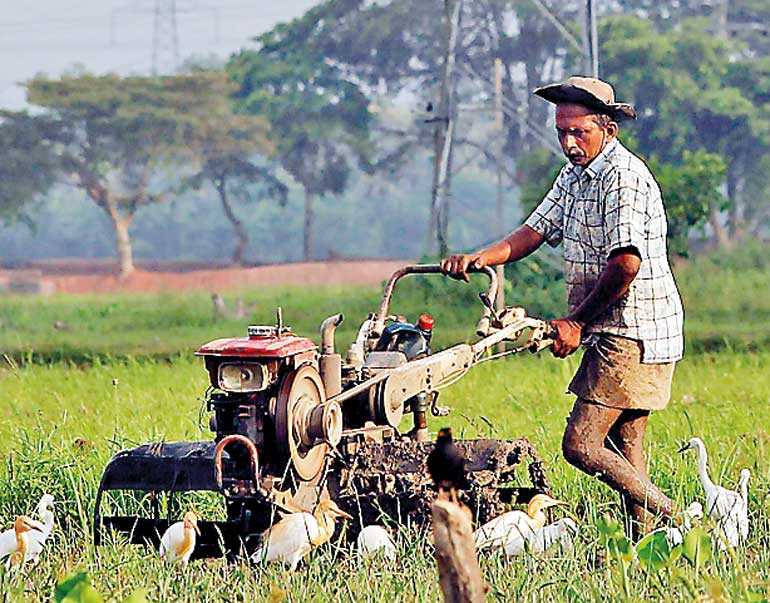Monday Apr 21, 2025
Monday Apr 21, 2025
Thursday, 31 October 2019 00:07 - - {{hitsCtrl.values.hits}}

The International Rice Research Institute (IRRI) is collaborating with partners in the Healthy Crops Research Consortium to enable rapid development of rice varieties, in order to be a step ahead of the evolution of rice diseases that can heavily affect yield and smallholder farmer income.
Two recent publications in the journal Nature Biotechnology describe, for the first time, an integrated strategy to eradicate diseases that reduce global rice production. This is the case of bacterial blight, a plant disease that affects large areas in Asia and sub-Saharan Africa. The research team behind the publication generated multi-resistant rice varieties as well as a diagnostic kit to recognize new variants of the pathogen.
Bacterial blight is a devastating plant disease that affects rice crops, and can cause as much as 70% yield loss when susceptible rice varieties are grown and weather conditions are optimum for its spread. Once rice plants are infected and the lesions appear, there are no chemical or crop management practices that farmers can apply to stop the onslaught of the disease. Because of this, growing rice crops resistant to bacterial blight is seen to be the most effective, economical, and ecological way of controlling the disease.
The Healthy Crops Research Consortium, led by Heinrich Heine University (HHU), with the University of Missouri, the University of Florida, the International Centre for Tropical Agriculture (CIAT), the Institut de Recherche pour le Développement (IRD), and IRRI, are working together to develop novel solutions to combat bacterial blight in rice.
Xanthomonas oryzae pv. oryzae, the causal agent of bacterial blight, uses transcription activator-like (TAL) effectors to manipulate the rice cell and activate the so-called SWEET genes. Those genes are responsible for exporting sugars outside the rice cell. As a result, massive amount of nutrients fuel the pathogen enabling the disease to occur. In the first Nature Biotechnology paper, the scientists were able to generate novel SWEET variations that can resist the activation by the pathogen. “Under normal conditions, the pathogen promotes the leakage of sugars by turning those SWEET genes on,” says Dr. Oliva, “However, the new variants prevent the SWEET activation and thus the release of sugar. The bacterium fails to get nutrition from the host plant and eventually dies. Essentially, this approach aims to outsmart the bacterium by depriving it of nutrients that it needs to survive and propagate. We defeat the enemy by starving it.”
Trials have shown that by making minimal changes at the DNA level to block nutrient flow that feeds bacterial growth, rice lines, including the mega-varieties IR64 and Ciherang-Sub1, have robust, broad-spectrum resistance to bacterial blight. These novel variants have been introduced into other elite rice lines, where a new class of blight-resilient rice varieties will become available in a few years.
“These variants are naturally occurring in rice,” says Dr. Sarah Schmidt from the Heinrich-Heine University (Germany). “We discovered how to mimic the way plants protect themselves against invading pathogens, and we used this knowledge to obtain broad-spectrum and durable disease resistance. The tools that we developed here can help to completely eradicate bacterial blight disease.”
In addition to developing these disease-resistant rice varieties, the research team also developed a diagnostic kit for rapid pathogen detection and deployment of rice blight resistance, which is described in the second Nature Biotechnology paper.
“This toolkit helps us efficiently identify specific strains of the gene in different regions, and make the breeding process more responsive to local demands,” says IRRI associate scientist Marian Hanna Nguyen. “These diagnostic tools include PathoTracer, an innovative web-based decision support system which will soon be available to rice growers and researchers in Asia and Africa.”
“PathoTracer integrates early-season pathogen disease diagnostics to accurately define breeding priorities and guide coordinated actions to manage crop diseases in real-time,” says Nguyen. “Through these technologies, we want to enable breeders even in remote rice-growing areas to have the tools in developing resilient rice varieties that are responsive to the needs of local farmers.”